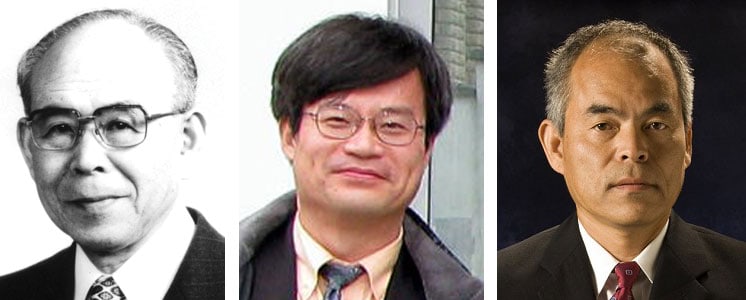With the 2019 Nobel Prize for Physics due to be announced on Tuesday 8 October, Physics World journalists pick their favourite Nobel awards from the past. Here Margaret Harris argues the case for the 2014 prize for inventing the blue LED

Of all the physics Nobel prizes awarded in the past 60 years, the one with the greatest impact on everyday life is undoubtedly the one shared by Isamu Akasaki, Hiroshi Amano and Shuji Nakamura in 2014. As the co-inventors of the blue light-emitting diode (LED), this Japanese-born trio set in motion a dramatic shift in how we see the world. You would have to go back to the 1956 prize – shared by transistor inventors John Bardeen, Walter Brattain and William Shockley – to find a Nobel-laureated discovery that sparked an equivalent transformation.
LEDs are amazingly efficient, requiring around 90% less energy than incandescent bulbs to produce the same amount of light. Although some of these energy savings are being cancelled out as it becomes financially feasible to illuminate once-dark areas, the LED’s efficiency is still a major step forward when you consider that 20-30% of the electricity consumed in industrial societies goes towards lighting. But the emergence of LED lighting as a mainstream commercial product would never have come about were it not for the work of Akasaki, Amano and Nakamura. By developing a blue LED to go with the red and green versions invented decades before, the 2014 laureates made it possible to create white-light LEDs – turning a niche technology into a ubiquitous one at a stroke.

Isamu Akasaki, Hiroshi Amano and Shuji Nakamura win 2014 Nobel Prize for Physics
Not that it was easy. Akasaki, Amano and Nakamura began their groundbreaking work in the 1980s, when Akasaki and Amano were researchers at Nagoya University and Nakamura was working at a small company called Nichia Chemicals. For years, it seemed their chosen material – a crystalline semiconductor called gallium nitride, or GaN – was not going to cooperate. Even getting the crystals to grow took effort. Then, in the early 1990s, first Akasaki and Amano, and then Nakamura, used a technique called metalorganic vapour phase epitaxy to deposit thin films of high-purity GaN onto substrates. After that, the next challenge was to introduce p-doping in order to produce the requisite p-n junction. Once this hurdle was surmounted, the first high-brightness blue LED followed.
By the mid-2000s, phosphor-coated bulbs that turned blue LED light into a somewhat “cold” white light were readily available in shops. Later, “warmer” versions have now superseded not only incandescent bulbs, but also halogen and compact fluorescent devices. As the Nobel Prize website observes, the 20th century was lit by incandescent bulbs; thanks to Akasaki, Amano and Nakamura; the 21st century is being lit by LED lamps. And how many other Nobel-prize-winning discoveries can you buy for less than a tenner at your local corner shop?
Physics World‘s Nobel prize coverage is supported by Oxford Instruments Nanoscience, a leading supplier of research tools for the development of quantum technologies, advanced materials and nanoscale devices. Visit nanoscience.oxinst.com to find out more.




